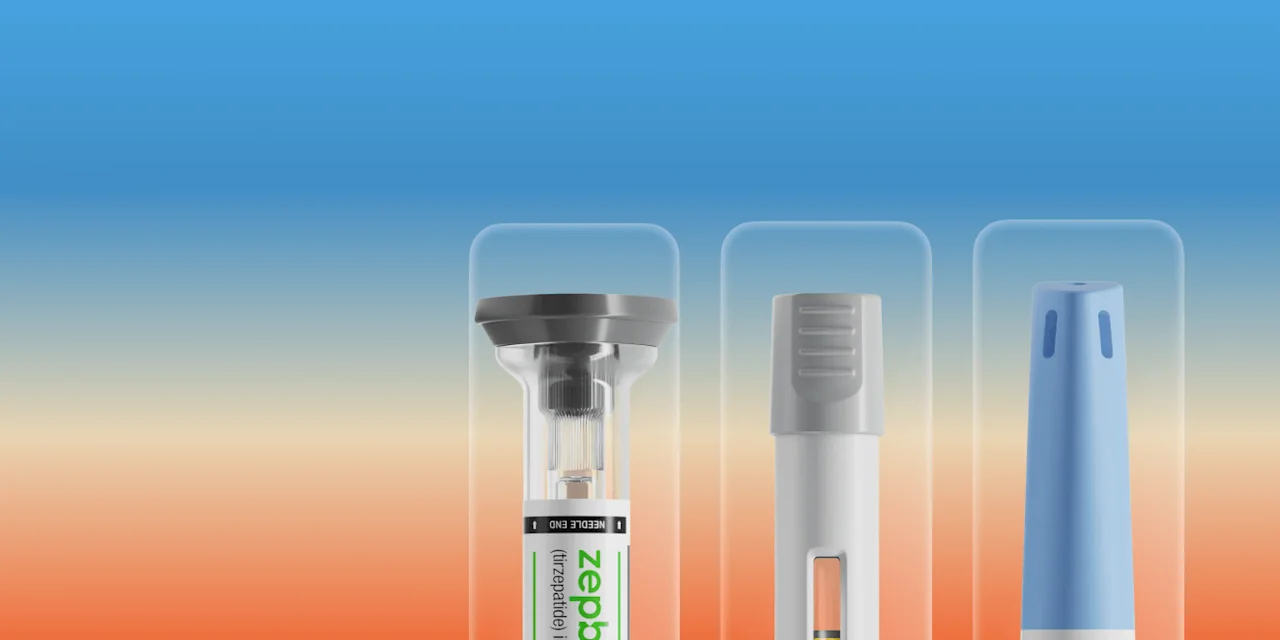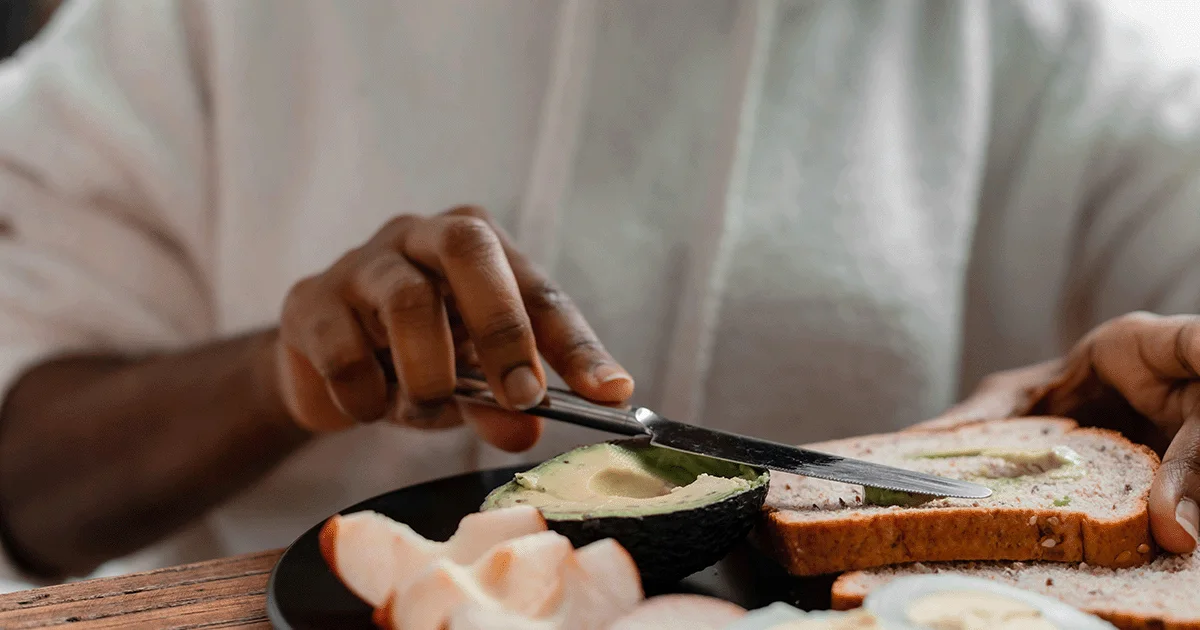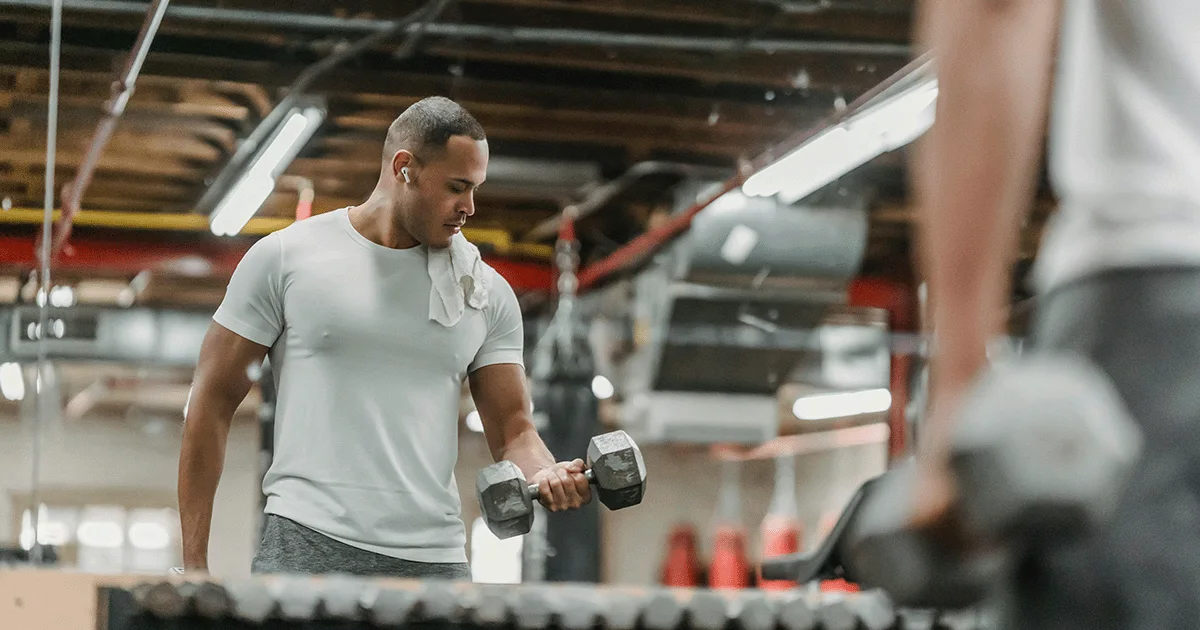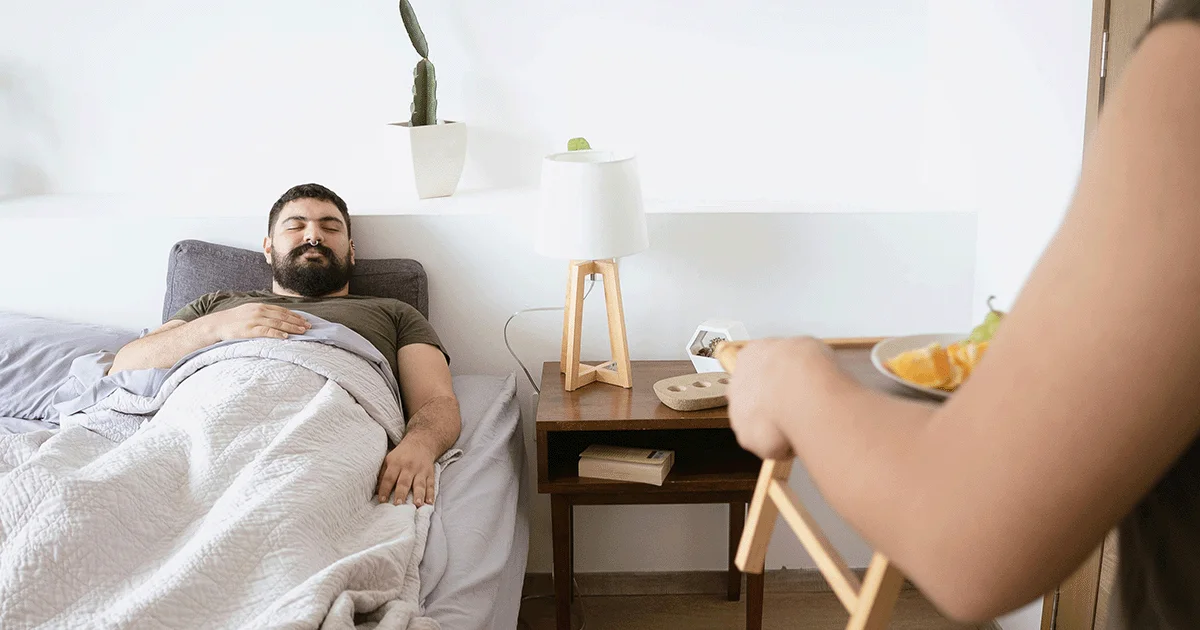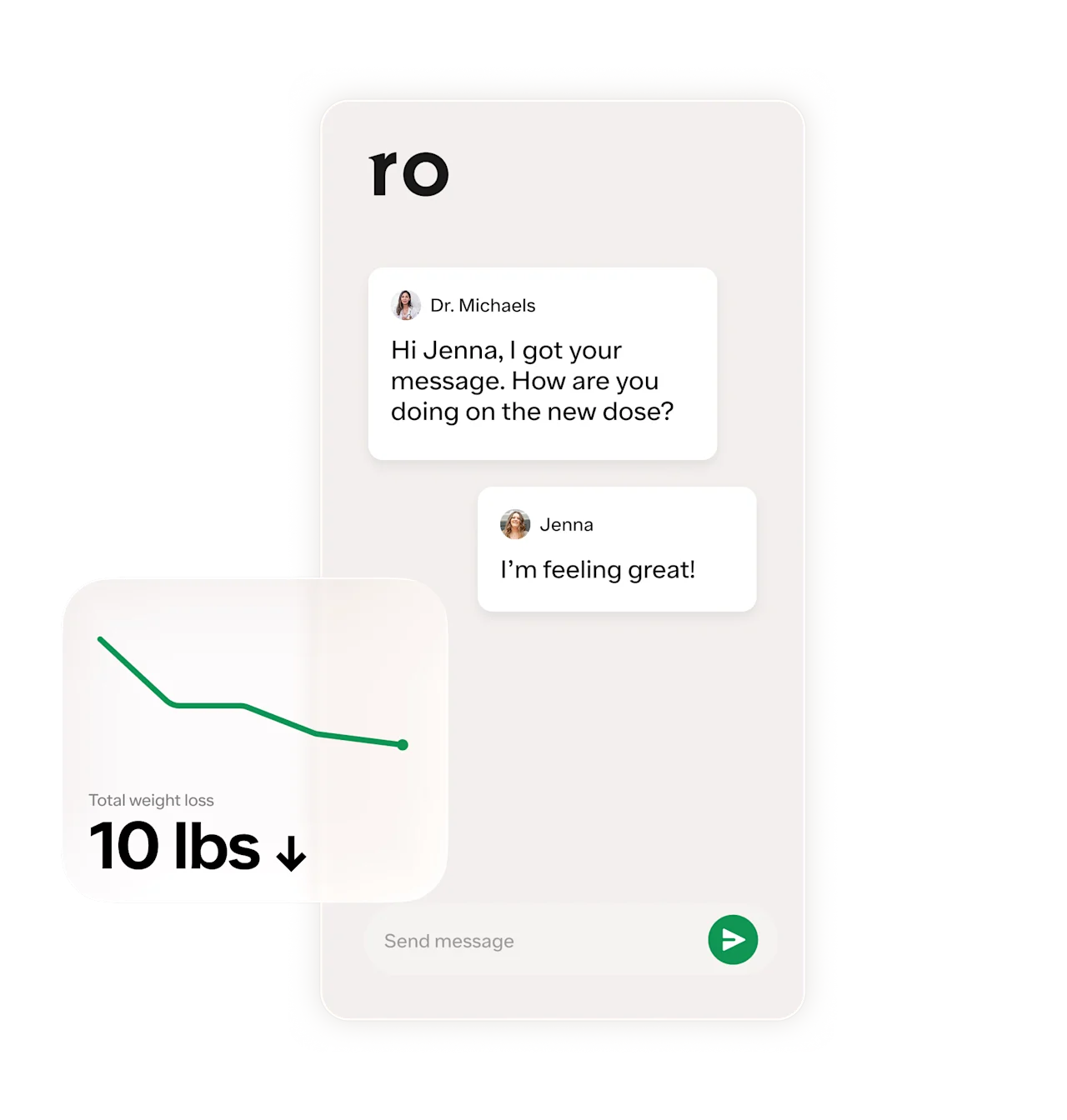Key takeaways
“Apron belly” describes sagging skin and fatty tissue that hangs from the stomach. It can drape over the lower belly, groin, and, in some cases, the thighs.
Pregnancy, significant weight loss, or obesity can all cause apron belly.
Complications of apron belly can include mental health concerns, lower back pain, and skin infections or rashes due to friction in skin folds.
Treatments to reduce an apron belly depend on the underlying condition contributing to it. Possible solutions include weight loss, skin-tightening treatments, or body-contouring surgery depending on your individual circumstances.
Here's what we'll cover
Key takeaways
“Apron belly” describes sagging skin and fatty tissue that hangs from the stomach. It can drape over the lower belly, groin, and, in some cases, the thighs.
Pregnancy, significant weight loss, or obesity can all cause apron belly.
Complications of apron belly can include mental health concerns, lower back pain, and skin infections or rashes due to friction in skin folds.
Treatments to reduce an apron belly depend on the underlying condition contributing to it. Possible solutions include weight loss, skin-tightening treatments, or body-contouring surgery depending on your individual circumstances.
If you have excess skin and fat that hangs down from your stomach, you might not realize there’s a name for it: an apron belly. It’s known by other names like apron stomach or pannus stomach. No matter what you call it, apron belly might cause discomfort like chafing or lower back pain. It can also make you feel self-conscious, but it can happen to anyone after pregnancy or significant weight loss or gain.
Keep reading to learn about what causes an apron belly and how to get rid of one.
What is an apron belly?
An apron belly, or pannus stomach, happens when extra fat and skin hang loosely over the lower abdomen. It gets its name because it resembles, well, an apron.
Like “hormonal belly,” an apron belly isn’t an official health condition. You can have it even if you have a healthy diet and exercise routine. It can get confused with FUPA, or fatty upper pubic area, but the two aren’t the same. Apron belly is hanging fat and skin around the belly, while a FUPA is mostly fat and is on your pubic area. Pregnancy and weight loss are two of the most common reasons people have apron belly.
At its most severe, an apron stomach can hang down as low as the thighs. Known as panniculus morbidus, this condition is usually caused by extreme obesity — a body mass index (BMI) of 40 or more. This large abdominal overhang can affect lymph drainage and blood flow, and can limit your mobility.
What causes apron belly?
Though your lifestyle, sex, age, and genetics can all play a role in body composition, there are usually only three direct causes of apron belly:
Pregnancy. During pregnancy, the skin on your abdomen gets stretched quickly and it doesn’t just snap back into place after giving birth. It’s common for postpartum individuals to have sagging skin and belly fat even months after delivery, which is why some people refer to it as “mother’s apron.”
A significant amount of weight loss. Sagging skin is common after rapid weight loss, such as after bariatric surgery. It can also happen when taking GLP-1 medications like Wegovy orZepbound. While losing weight means you’ve lost fat, your skin can’t always keep up and, at times, it can stay overstretched even after the weight comes off. Research shows that the skin starts to tighten up in the abdomen about 6–12 months on average after you reach a steady body weight. The excess skin and tissue underneath may form an overhang or apron belly.
Obesity. Excess weight can cause fat to build up in the abdomen, which can start to hang down due to gravity.
What causes a postpartum apron belly?
Apron belly can happen to a lot of people after having a baby, even when you regularly work out and eat healthy. There are a two primary reasons you can have an apron belly after giving birth:
You’ve lost a lot of weight quickly: Birthing a baby is a lot of work. You’ve had an entire human come out of you (along with some other stuff) and that causes your abdomen to shrink quite quickly. All that stretched skin and loose tissue is completely normal, but it can leave you with an apron belly.
Diastasis recti might be to blame: This is a common pregnancy-related concern where the muscles of the abdominal wall separate because of the pressure from the uterus. Since these muscles are stretched out, it can make apron belly more obvious.
Is apron belly dangerous? Health risks of an apron belly
Having an apron belly can pose some risks to your health. For instance, a heavy apron belly caused by obesity could cause lower back pain, which could eventually affect how you get around in everyday life and perform your usual activities.
The folds of excess skin can also cause skin-on-skin friction, leading to skin problems such as:
Skin infections, like cellulitis
An inflamed skinfold rash called intertrigo
Skin sores and ulcers
Apron belly can understandably affect you mentally and emotionally as well. Some people may not feel satisfied with their body’s physical appearance when dealing with apron belly and research suggests that poor body image is linked to depression. Being dissatisfied with your body can lead to a wide range of mental and emotional health problems like:
Eating disorders
Sleep issues
Anxiety
Depression
How to prevent and ease discomfort from an apron belly
Here are five helpful ways to prevent or decrease discomfort from skin-on-skin friction caused by apron belly:
Wash skin folds daily to prevent bacterial rashes and infections.
Dry damp skin folds completely with a soft towel or hair dryer after washing or sweating.
Wear loose-fitting, breathable fabrics to reduce sweating, which can cause heat rash. Try to stay in cool, air-conditioned places and apply antiperspirant as needed.
Sprinkle absorbent powder on skinfolds to prevent sweat rashes. Be sure not to use cornstarch if you have a fungal infection in the area, because it can make the infection worse.
Consider a barrier cream like triple paste — a cream containing aluminum acetate solution, zinc oxide, and petrolatum — to soothe irritation and reduce friction. Make sure you get the okay from your healthcare provider.
If you are already experiencing skin issues from apron belly, it’s important to consult a dermatologist or another healthcare provider before trying any of these treatments. If you have a skin infection, you may even need antibiotics.
Skin issues aren’t the only issues people with apron belly can face. For those who experience back pain associated with apron belly, abdominal support bands might help. However, their tight fit may also cause or worsen existing skin issues. Speak with your healthcare provider for advice on managing your back pain from apron belly. There might be exercises they recommend to decrease your discomfort.
Can apron belly go away naturally?
Unfortunately, apron belly doesn’t usually go away on its own. Diet and exercise can help, but they don’t usually address the issue of excess skin. And you can’t target your weight loss to just your abdomen.
That doesn’t mean there’s nothing you can do to address your apron belly, though. Healthy lifestyle changes like eating more nutritious foods and moving your body regularly can help improve your overall health, and eating a balanced diet can help ensure your skin has all the nutrients it needs. Cardio and strength training exercises can help you lose fat (including in the belly!), and strength training can tighten up muscles and improve your core strength, which could also help address your back pain.
If lifestyle measures aren’t working, you can always discuss additional options like medical procedures and surgery with your healthcare provider.
How to get rid of an apron belly
The best way to reduce or get rid of an apron belly depends on what is causing it. Here’s a closer look at a variety of tactics that might help you address apron belly:
Healthier diet
Improving your diet may help reduce an apron stomach if the issue is caused by excess belly fat. That’s because your food choices can make a difference in losing weight and body fat. Both of these can help improve an apron belly.
Some strategies for healthy weight loss and improving overall health include:
Eating fewer processed foods and sugars, which are linked to fat buildup deeper inside your abdomen.
Packing your plate with more nutrient-dense fruits and vegetables, especially those full of gut-healthy fiber, like raspberries, pears, broccoli, and carrots
Eating more protein to help you feel more satisfied after meals, leading to less mindless snacking. Healthy lean proteins include beans, lentils, fish, and skinless chicken.
Regular exercise
While exercise in general is good for overall health, certain workouts can be especially helpful for weight loss, building and improving abdominal muscle tone, and reducing fat — all of which can help apron belly and even help decrease back pain associated with it.
Aerobic activities can be helpful for losing weight and decreasing fat. One study found that doing at least 150 minutes of moderate to high intensity aerobic training like brisk walking or running can help reduce waist circumference and body fat.
And then there are core-strengthening exercises, such as planks and squats, to help stabilize and tighten your abdominal muscles and decrease or prevent back pain.
Weight loss medications
Losing weight can help improve apron belly if your apron belly is due to a higher body weight. Depending on your lifestyle and other health conditions, your healthcare provider may recommend weight loss medications such as GLP-1s (glucagon-like peptide-1 receptor agonists) like Wegovy, which can help balance blood sugar and reduce appetite.
Be cautious, though, because weight loss that is too rapid can actually contribute to increased appearance of apron belly. This happens if your weight loss happens more quickly than your skin is able to adjust. So make sure to work with your healthcare provider to ensure your weight loss is moderate and gradual over a period of time that gives your body enough time to adjust.
Furthermore, if your apron belly is due to excess skin rather than excess fat, losing additional weight may not be too effective in reducing its appearance.
Radiofrequency
Radiofrequency is a non-surgerical skin tightening procedure that may help improve apron belly after pregnancy or weight loss. This procedure uses heat to stimulate collagen production, which helps firm and plump skin.
Keep in mind that radiofrequency is not a magic bullet for loose skin. It helps improve skin elasticity and firmness, but it won’t shrink inches of excess hanging skin. Still, radiofrequency may be helpful if you have a mild apron belly and can sometimes be used alongside other strategies.
Cryolipolysis
Cryolipolysis, also known as fat freezing, is another procedure that could help improve apron belly caused by obesity or excess belly fat. This treatment can help reduce subcutaneous fat tissue in the abdomen — fatty tissue right under the skin. It works by freezing and killing fat cells in specific areas of the body.
In one small study, more than 95% of people who had cryolipolysis reported improvements in belly fat 16 weeks after treatment. But it’s important to have realistic expectations. Cryolipolysis won’t completely get rid of an apron belly if you have obesity and might not be helpful if your apron belly is due to excess skin, but it may help get rid of small amounts of belly fat that remain under the skin after weight loss.
Hydration
Good hydration won't fix an apron belly on its own. But it can give you healthier, plumper, and more elastic-looking skin which could improve the appearance of your apron belly (and other parts of your body!). Staying hydrated involves:
Eating water-rich foods like watermelon and cucumber
Moisturizing your skin with hydrating ingredients such as glycerin and hyaluronic acid
Abdominoplasty
An abdominoplasty, aka a tummy tuck, is a type of plastic surgery that removes excess skin and fat and then tightens the abdominal muscles. It can be a highly effective way to get rid of apron belly from pregnancy or significant weight loss.
Still, it’s considered a cosmetic procedure, so it’s rarely covered by insurance. It also has a higher risk of complications than non-surgical methods. While effective, abdominoplasty is a major surgery that typically requires at least two weeks of recovery.
Panniculectomy
A panniculectomy is plastic surgery that involves removing the pannus, or excess skin, from your lower abdomen. It’s similar to a tummy tuck, except that panniculectomies don’t tighten the abdominal muscles.
This surgery is specifically done to treat apron belly and reduce the risk of related skin issues like rashes and ulcers. It may or may not be covered by insurance, depending on whether your healthcare provider documents other health conditions or reasons for the surgery.
How to get rid of an apron belly: surgery vs. non-surgical options
Type of treatment | Treatment | Pros | Cons | Recovery times | Costs |
Non-surgical | Radiofrequency | Quick, relatively painless process | Mild redness and swelling, in rare cases, it can cause burns | Within a day | About $1,200, rarely covered by insurance |
Non-surgical | Cryolipolysis | Quick procedure with low risk of infection; may resume normal activities right after treatment. | Skin may not heal smoothly; might need more than one session. Can also cause redness and swelling to the skin. | Within a day | About $1,700, rarely covered by insurance |
Surgical | Abdominoplasty | Gives a flatter, more toned abdomen, can decrease back pain | Risk of infection, bleeding, or scarring. Recovery time. | About 2 months | Varies, on average $8,000 not including anesthesia or operating expenses, not covered by insurance |
Surgical | Panniculectomy | Excess skin removal; reduced risk for rashes and infection | Risk of infection, bleeding, or scarring. Longer recovery time. | About 3 months | Might be covered by insurance depending on your reason for needing it |
Non-surgical | Lifestyle changes (diet, exercise, hydration) | Much more affordable than a procedure, helps overall health | May not actually get rid of apron belly, just helps with fat loss | N/A | N/A |
What are the best exercises for apron belly
There are no official best exercises for an apron belly. However, a mix of aerobic and core-strengthening exercises may help you lose excess body weight and firm up your abdominal region. For instance, planks and Bulgarian squats help activate your abdominal muscles and can even help with back pain when done over time.
Some examples of good exercises that can help reduce apron belly include:
Aerobic exercises: These include running, swimming, and cycling.
Planks: Lie on your stomach, bend your elbows and place your forearms on the floor. Push up so your body is straight and you’re resting on your toes (or knees) and forearms. Don’t let your hips sag. Hold your body straight and tighten your core for as long as you can.
Bulgarian squats: Place your back leg on a chair or bench behind you. Bend your front knee and lower your body down towards the floor. Keep your upper body upright. Your back knee should also lower towards the floor, going as low as you’re comfortable. Push back up and switch legs.
Mountain climbers: Start out in a plank position, and then bring one knee forward toward your chest. Switch legs and alternate your knees. Keep your core tight and don’t let your hips sag.
Of course, check in with a healthcare provider before making drastic changes to your exercise routine and make sure you are cleared for exercise. When adding exercise to your routine, it can be helpful to start slow and increase the intensity and duration of your exercise over time. While some amount of discomfort (think: feeling the burn) can happen during physical activity, if you are experiencing pain while doing any of these exercises, stop and address the concern with your healthcare provider before resuming physical activity. You can always work with a personal trainer or physical therapist if you would like help introducing exercise into your routine.
Bottom line
Apron belly is a common concern for people who have given birth, lost significant weight, and for those with obesity. It’s worth discussing with your healthcare provider if you have challenges related to an apron belly. Here are the key takeaways to keep in mind:
Apron belly isn’t a medical diagnosis. Apron belly is a non-medical term that describes loose belly skin and fatty tissue that folds or hangs downward.
There are three main reasons you might have an apron belly. Apron belly can be a result of pregnancy, significant weight loss, or obesity.
Apron belly can cause physical and mental health concerns. Complications of apron belly can include body image issues and lower back pain. Skin infections or sores can happen if the skin is not properly cared for.
Treatment for apron belly depends on the factors causing it. Lifestyle changes such as improving your diet and exercising regularly may help address overall body weight and some of your symptoms.
Talk with a healthcare provider. For concerns regarding loose skin, excess fat, or overall body composition or body image, it may be helpful to seek personalized guidance from a healthcare provider.
Frequently asked questions (FAQs)
How can you get rid of an apron belly without surgery?
If you’re wondering how to get rid of an apron belly without surgery, look at your overall lifestyle. Do you have a healthy body weight? Are you eating a balanced diet and exercising regularly?
Once you’re at a healthy body weight, you may be able to consider reducing your apron belly with skin-tightening procedures and core strength training. Neither of these options requires a major surgery.
What is the difference between a FUPA vs. an apron belly?
While both are colloquial terms, the main difference between FUPA and an apron belly is the location. FUPA is a term that refers to a bulge of fat in the upper pubic area. Apron belly, on the other hand, describes belly fat that hangs down or folds over the groin. Remember, these terms are used casually and are not considered medical terms or diagnoses. Feel free to refer to your body in whatever manner feels right for you.
Can apron belly go away naturally?
Apron belly is unlikely to go away without making any changes to your routine. Healthy habits like nutritious eating, cardio, and strength training can improve overall health and play an important role in toning muscles and reducing the appearance of apron belly. Depending on your individual circumstances, medical treatments or surgery may be needed to fully remove an apron belly.
How do you hide apron belly without surgery?
To hide an apron belly without surgery, wear clothing like high-waisted pants or skirts. You can wear support bands, or supportive shapewear that can give you a smoother appearance. But support bands and shapewear can trap moisture and heat, which could mean skinfolds can get irritated and potentially infected, so try to limit the duration you use these types of clothing. It’s important for you to feel confident, so wear clothing that makes you feel happy and comfortable while also taking good care of your skin.
Does apron belly get worse with age?
Apron belly doesn’t necessarily get worse with age, but when you get older, your skin is less elastic. So after a pregnancy or significant weight loss in older individuals, the skin has a harder time retracting and tightening. This can increase the apron belly’s appearance.
Is apron belly the same as diastasis recti?
No, apron belly isn’t the same as diastasis recti, but the two are related. Both can occur during pregnancy. Diastasis recti happens when the abdominal muscles stretch and separate due to pressure from the growing uterus. This separation weakens the abdominal wall and can make an apron belly appear more pronounced.
What is the recovery time for apron belly surgery?
The recovery time for apron belly surgery depends on the type of surgery you have done. More invasive surgeries will require a longer recovery time than less invasive ones. You can receive specific expectations regarding recovery from your healthcare provider after an initial surgical consultation.
DISCLAIMER
If you have any medical questions or concerns, please talk to your healthcare provider. The articles on Health Guide are underpinned by peer-reviewed research and information drawn from medical societies and governmental agencies. However, they are not a substitute for professional medical advice, diagnosis, or treatment.
GLP-1 Important Safety Information: Read more about serious warnings and safety info.
Wegovy Important Safety Information: Read more about serious warnings and safety info.
Zepbound Important Safety Information: Read more about serious warnings and safety info.
References
American Society of Plastic Surgeons. (2019). ASPS Recommended Insurance Coverage Criteria for Third-Party Payers: Panniculectomy. Retrieved from https://www.plasticsurgery.org/documents/Health-Policy/Reimbursement/insurance-2019-panniculectomy.pdf
Araújo, A. R., Soares, V. P., Silva, F. S., et al. (2015). Radiofrequency for the treatment of skin laxity: myth or truth. Anais Brasileiros de Dermatologia, 90(5), 707–721. doi: 10.1590/abd1806-4841.20153605. Retrieved from https://pubmed.ncbi.nlm.nih.gov/26560216/
Bentivegna, K., Waldman, R. A., & Grant-Kels, J. M. (2021). Nutrition and water. Clinics in Dermatology, 39(5), 757-761. doi: 10.1016/j.clindermatol.2021.05.003. Retrieved from https://www.sciencedirect.com/science/article/abs/pii/S0738081X21000675
Bolke, L., Schlippe, G., Gerß, J., et al. (2019). A collagen supplement improves skin hydration, elasticity, roughness, and density: results of a randomized, placebo-controlled, blind study. Nutrients, 11(10), 2494. doi: 10.3390/nu11102494. Retrieved from https://www.ncbi.nlm.nih.gov/pmc/articles/PMC6835901/
Choi, S. Y., Park, J. W., Koh, Y. G., et al. (2022). Cryolipolysis for abdominal subcutaneous fat reduction: A prospective, multicenter, single arm, clinical study. Dermatologic Therapy, 35(9), e15717. doi: 10.1111/dth.15717. Retrieved from https://pubmed.ncbi.nlm.nih.gov/35837791/
Derderian, S. C., Dewberry, L. C., Patten, L., et al. (2020). Excess skin problems among adolescents after bariatric surgery. Surgery for Obesity and Related Diseases : Official Journal of the American Society for Bariatric Surgery, 16(8), 993–998. doi: 10.1016/j.soard.2020.04.020. Retrieved from https://pmc.ncbi.nlm.nih.gov/articles/PMC7423629/
Donnelly, J. E., Honas, J. J., Smith, B. K., et al. (2013). Aerobic exercise alone results in clinically significant weight loss for men and women: midwest exercise trial 2. Obesity, 21(3), E219–E228. doi: 10.1002/oby.20145. Retrieved from https://pmc.ncbi.nlm.nih.gov/articles/PMC3630467/
Eck, K. M., Quick, V., & Byrd-Bredbenner, C. (2022). Body dissatisfaction, eating styles, weight-related behaviors, and health among young women in the United States. Nutrients, 14(18), 3876. doi: 10.3390/nu14183876. Retrieved from https://www.mdpi.com/2072-6643/14/18/3876
Ingargiola, M. J., Motakef, S., Chung, M. T., et al. (2015). Cryolipolysis for fat reduction and body contouring: safety and efficacy of current treatment paradigms. Plastic and Reconstructive Surgery, 135(6), 1581–1590. doi: 10.1097/PRS.0000000000001236. Retrieved from https://pmc.ncbi.nlm.nih.gov/articles/PMC4444424/
Jayedi A., Soltani S., Emadi A., et al. (2024). Aerobic exercise and weight loss in adults: a systematic review and dose-response meta-analysis. JAMA Network Open, 7(12), e2452185. doi: 10.1001/jamanetworkopen.2024.52185. Retrieved from https://jamanetwork.com/journals/jamanetworkopen/fullarticle/2828487
Kaya, A. K., & Menek, M. Y. (2023). Comparison of the efficiency of core stabilization exercises and abdominal corset in the treatment of postpartum diastasis recti abdominis. European Journal of Obstetrics, Gynecology, and Reproductive Biology, 285, 24–30. doi: 10.1016/j.ejogrb.2023.03.040. Retrieved from https://pubmed.ncbi.nlm.nih.gov/37031572/
Kohanmoo, A., Faghih, S., & Akhlaghi, M. (2020). Effect of short- and long-term protein consumption on appetite and appetite-regulating gastrointestinal hormones, a systematic review and meta-analysis of randomized controlled trials. Physiology & Behavior, 226, 113123. doi: 10.1016/j.physbeh.2020.113123. Retrieved from https://pubmed.ncbi.nlm.nih.gov/32768415/
Lucha-López, M. O., Hidalgo-García, C., Monti-Ballano, S., et al. (2023). Body mass index and its influence on chronic low back pain in the Spanish population: a secondary analysis from the European Health Survey (2020). Biomedicines, 11(8), 2175. doi: 10.3390/biomedicines11082175. Retrieved from https://pmc.ncbi.nlm.nih.gov/articles/PMC10452522/
Ma, J., Sloan, M., Fox, C. S., et al. (2014). Sugar-sweetened beverage consumption is associated with abdominal fat partitioning in healthy adults. The Journal of Nutrition, 144(8), 1283–1290. doi: 10.3945/jn.113.188599. Retrieved from https://pmc.ncbi.nlm.nih.gov/articles/PMC4093984
MedlinePlus. (2024). Panniculectomy. Retrieved from https://medlineplus.gov/ency/article/007739.htm
Mohajan, D. & Kumar Mohajan, H. (2023). Panniculus morbidus: a new global health crisis due to extreme obesity. Innovation in Science and Technology, 2(5), 1–6. doi: 10.56397/IST.2023.09.01. Retrieved from https://www.researchgate.net/publication/374081065_Panniculus_Morbidus_A_New_Global_Health_Crisis_Due_to_Extreme_Obesity
Monteiro, C. A., Cannon, G., Levy, R. B., et al. (2019). Ultra-processed foods: what they are and how to identify them. Public Health Nutrition, 22(5), 936–941. doi: 10.1017/S1368980018003762. Retrieved from https://pubmed.ncbi.nlm.nih.gov/30744710/
Nobles, T., Syed, H. A., & Miller, R. A. (2024). Intertrigo. StatPearls. Retrieved on Jun. 13, 2025 from https://www.ncbi.nlm.nih.gov/books/NBK531489/
Oliva-Lozano, J. M. & Muyor, J. M. (2020). Core muscle activity during physical fitness exercises: a systematic review. International Journal of Environmental Research and Public Health, 17(12), 4306. doi: 10.3390/ijerph17124306. Retrieved from https://pmc.ncbi.nlm.nih.gov/articles/PMC7345922/
Purnell, J. (2023). Definitions, classification, and epidemiology of obesity. EndoText. Retrieved from https://www.ncbi.nlm.nih.gov/books/NBK279167/
Regan J. P. & Casaubon, J. T. (2023). Abdominoplasty. StatPearls. Retrieved on Jun. 13, 2025 from https://www.ncbi.nlm.nih.gov/books/NBK431058/
Riesco-González, F. J., Antúnez-Calvente, I., Vázquez-Lara, J. M., et al. (2022). Body image dissatisfaction as a risk factor for postpartum depression. Medicina (Kaunas, Lithuania), 58(6), 752. doi: 10.3390/medicina58060752. Retrieved from https://pmc.ncbi.nlm.nih.gov/articles/PMC9228492/
Sachs, D., Jakob, R., Thumm, B., et al. (2024). Sustained physiological stretch induces abdominal skin growth in pregnancy. Annals of Biomedical Engineering, 52(6), 1576–1590. doi: 10.1007/s10439-024-03472-6. Retrieved from https://pmc.ncbi.nlm.nih.gov/articles/PMC11081934/
Sachs, D., Sequeira Campos, M. B., Hattingh, G., et al. (2023). Panniculectomy. StatPearls. Retrieved on May 26, 2025 from https://www.ncbi.nlm.nih.gov/books/NBK499822/
Sadeghi, P., Duarte-Bateman, D., Ma, W., et al. (2022). Post-bariatric plastic surgery: abdominoplasty, the state of the art in body contouring. Journal of Clinical Medicine, 11(15), 4315. doi: 10.3390/jcm11154315. Retrieved from https://www.ncbi.nlm.nih.gov/pmc/articles/PMC9330885/
Sami, K., Elshahat, A., Moussa, M., et al. (2015). Image analyzer study of the skin in patients with morbid obesity and massive weight loss. Eplasty, 15, e4. Retrieved from https://pmc.ncbi.nlm.nih.gov/articles/PMC4311578/
Seleem, M., Osman, O.M., Kashmar, S.G. et al. (2024). The effect of cesarean section on the dimensions and ratios of mons pubis. BMC Pregnancy Childbirth, 24, 496. doi: 10.1186/s12884-024-06667-w. Retrieved from https://bmcpregnancychildbirth.biomedcentral.com/articles/10.1186/s12884-024-06667-w
Śmietański, M., Śmietańska, I. A., & Zamkowski, M. (2022). Post-partum abdominal wall insufficiency syndrome (PPAWIS): Lessons learned from a single surgeon’s experience based on 200 cases. BMC Surgery, 22(1), 305. doi: 10.1186/s12893-022-01757-y. Retrieved from https://pmc.ncbi.nlm.nih.gov/articles/PMC9358894/
Tsartsapakis, I., Bagioka, I., Fountoukidou, et al. (2024). A comparison between core stability exercises and muscle thickness using two different activation maneuvers. Journal of Functional Morphology and Kinesiology, 9(2), 70. doi: 10.3390/jfmk9020070. Retrieved from https://pmc.ncbi.nlm.nih.gov/articles/PMC11036226/
Van Gemert, W. A., Peeters, P. H., May, A. M., et al. (2019). Effect of diet with or without exercise on abdominal fat in postmenopausal women - a randomised trial. BMC Public Health, 19(1), 174. doi: 10.1186/s12889-019-6510-1. Retrieved from https://pmc.ncbi.nlm.nih.gov/articles/PMC6371569/



